 SOME OF THE MOST BEAUTIFUL PLACES OF CUBA. #10. VIDEOS.
SOME OF THE MOST BEAUTIFUL PLACES OF CUBA. #10. VIDEOS.
Old Havana. (Havana Vieja).
Old Havana is the best example of colonial architecture on the island and throughout the Caribbean. Located on the western margin of Havana Bay and 3.2 km (2.0 mi) on the north-south axis and 1.6 km (1.0 mi) on the east-west axis, it is the largest colonial center in the Caribbean.

Declared a World Heritage Site by UNESCO in 1982 with the aim of preserving its architecture and its historical heritage, Old Havana treasures in its environment many of the most beautiful and important squares, buildings, historical monuments, museums and forts of the time colonial island.
Santiago de Cuba.

Santiago de Cuba is the second city of Cuba and also the capital of the province of the same name, characterized by the interrelation of the main mountain range of the island, the Sierra Maestra, and the Caribbean Sea. Santiago de Cuba is a mountain and sea, a Caribbean sea. The city, built in a hilly area next to the bay of the same name and having as backdrop the Sierra Maestra is very picturesque and full of beautiful physical scenarios and has an important historical and cultural heritage.
City of Trinidad.

The city of Trinidad is located in the center of the island, in the province of Sancti Spiritus. Trinidad is one of the first villages founded in Cuba (1514) and has been declared by UNESCO as a Cultural Heritage of Humanity and is where the best architecture and colonial air have been preserved on the island for what is also known as Ciudad Museum of the Caribbean Sea. It is actually one of the most charming and magical cities in the Caribbean and Latin America.
In its environment, of great natural beauty, is the Valley of the Sugar Mills, also a Cultural Heritage of Humanity, and the Sierra del Escambray, a true ecological paradise.
City of Cienfuegos.

The City of the Sea, Cienfuegos, is undoubtedly the most beautiful city in Cuba. Located in the center-south of the country, in the margins of the bay of Jagua, was founded by French originating from the Louisiana in the year 1819. In her parks, theaters, churches can be admired, cemeteries full of sculptural monuments of great value, architectural gems like the Palacio de Valle and the Terry theater.
City of Baracoa.

The primate city of Cuba is Baracoa, the first town in the country was founded by Diego Velázquez in 1511 at the eastern end of the island. The physical isolation in which it was maintained for 4 centuries and an exuberant nature give it a unique air on the island, the original layout of the town is maintained as well as its own danzario-culinary manifestations and an architecture in wood without equal in the country. In addition to the beautiful natural environment that is enjoyed in Baracoa, which highlights the rivers Miel and Toa (the largest in Cuba). Access to the city can be by road through La Farola, a unique scenic route.
Viñales Valley, Pinar del Rio.
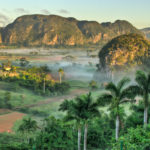
One of the most beautiful places in Cuba, characterized by the beauty of the landscape, which highlights the mogotes, both alone and in karstic mountain ranges, alternating with the tobacco fields, fields and rustic houses of peasant families .
Viñales Valley is located in the center of the Sierra de los Organos and this combination of natural and cultural landscape has earned it the category of Natural Landscape of Humanity given by UNESCO. It also highlights the flora and fauna of the region for its exclusivity and several cave systems that rank among the most beautiful and largest in Latin America.
Key Largo del Sur. Archipelago of the Canarreos.
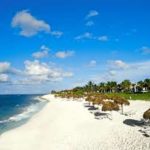
Cayo Largo del Sur is a small and paradisiacal island located in the south of the island of Cuba, in the eastern end of the Canarreos Archipelago and in the middle of the Caribbean Sea.
Cayo Largo is largely in a natural state and quite well preserved. It has around 20 km of sandy beaches with limpid waters and fine white sand, many of them almost virgin.
The fauna is rich in species especially of birds and fish, although here they stand out for their popularity the iguanas, a species of reptiles that in spite of their threatening aspect are, like all the other animals of these keys and of Cuba in general, completely Harmless
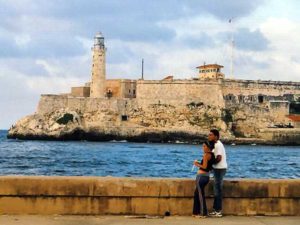 La Habana Vieja.
La Habana Vieja.
La Habana Vieja es el máximo exponente de la arquitectura colonial en la isla y en todo el Caribe. Situada en la margen oeste de la bahía de La Habana y con 3.2 km (2.0 mi) en el eje norte-sur y 1.6 km (1.0 mi) en el eje este-oeste, es el mayor centro colonial del Caribe.
Declarada como Patrimonio de la Humanidad por la UNESCO en 1982 con el objetivo de preservar su arquitectura y su herencia histórica, La Habana Vieja atesora en su entorno muchas de las más bellas e importantes plazas, edificaciones, monumentos históricos, museos y fortalezas de la época colonial de la isla.
Santiago de Cuba.

Santiago de Cuba es la segunda ciudad de Cuba y también la capital de la provincia del mismo nombre, caracterizada por la interrelación de la principal cadena montañosa de la isla, la Sierra Maestra, y el Mar Caribe. Santiago de Cuba es montaña y mar, mar Caribe. La ciudad, construida en una zona colinosa junto a la bahía del mismo nombre y teniendo de telón de fondo la Sierra Maestra es muy pintoresca y llena de bellos escenarios físicos y tiene una importante herencia histórica y cultural.
Ciudad de Trinidad.

La ciudad de Trinidad esta localizada en el centro de la isla, en la provincia de Sancti Spíritus. Trinidad es una de las primeras villas fundadas en Cuba (1514) y ha sido declarada por la UNESCO Patrimonio Cultural de la Humanidad y es donde la arquitectura y el aire colonial mejor se han conservado en la isla por lo que también se le conoce como Ciudad Museo del Mar Caribe. En realidad es una de las mas encantadoras y mágicas ciudades en todo el Caribe y Latino América.
En su entorno, de gran belleza natural, se encuentra el Valle de los Ingenios, también Patrimonio Cultural de la Humanidad, y la Sierra del Escambray, un verdadero paraíso ecológico.
Ciudad de Cienfuegos.
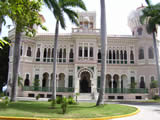
La Ciudad del Mar, Cienfuegos, es sin dudas la ciudad mas bella de Cuba. Situada en el centro-sur del país, en las márgenes de la bahía de Jagua, fue fundada por franceses provenientes de la Louisiana en el año 1819. En ella pueden admirarse parques, teatros, iglesias, cementerios llenos de monumentos escultóricos de gran valor, joyas arquitectónicas como el Palacio de Valle y el teatro Terry.
Ciudad de Baracoa.
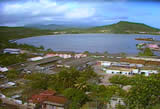
La ciudad primada de Cuba es Baracoa, la primera villa del país fue fundada por Diego Velázquez en el año 1511 en el extremo oriental de la isla. El aislamiento físico en que se mantuvo por 4 siglos y una naturaleza exuberante le dan un aire único en la isla, el trazado original de la villa se mantiene así como manifestaciones danzario-culinarias propias y una arquitectura en madera sin par en el país. Además del bello entorno natural que se disfruta en Baracoa en el que se destacan los ríos Miel y Toa (el mas caudaloso de Cuba).
El acceso a la ciudad puede ser por carretera a través de La Farola, una vía escénica única.
Valle de Viñales, Pinar del Rio.

Uno de los lugares mas bellos de Cuba, caracterizada por la belleza del paisaje, en el que se destacan los mogotes, tanto en solitario como en sierras cársicas, alternando con las vegas de tabaco, los campos de cultivo y las casas rústicas de familias campesinas.
El valle de Viñales se localiza en el centro de la Sierra de los Órganos y esta combinación de paisaje natural y cultural le han ganado la categoría de Paisaje Natural de la Humanidad dada por la UNESCO. Se destacan, además, la flora y la fauna de la región por su exclusividad y varios sistemas cavernarios que clasifican entre los mas bellos y mas grandes de Latinoamérica.
Cayo Largo del Sur. Archipiélago de los Canarreos.

Cayo Largo del Sur es una pequeña y paradisíaca isla situada al Sur de la isla de Cuba, en el extremo Este del Archipiélago de los Canarreos y en medio del Mar Caribe.
Cayo Largo en gran parte se encuentra en estado natural y bastante bien conservado. Tiene alrededor de 20 Km de playas arenosas con aguas límpidas y arena fina y blanca, muchas de ellas casi vírgenes.
La fauna es rica en especies sobre todo de aves y peces, aunque aquí destacan por su popularidad las iguanas, una especie de reptiles que a pesar de su aspecto amenazador son, como todos los demás animales de estos cayos y de Cuba en general, completamente inofensivas.
Agencies/ Wiki/ Internet Photos/ Arnoldo Varona/ www.thecubanhistory.com
THE CUBAN HISTORY, HOLLYWOOD.



